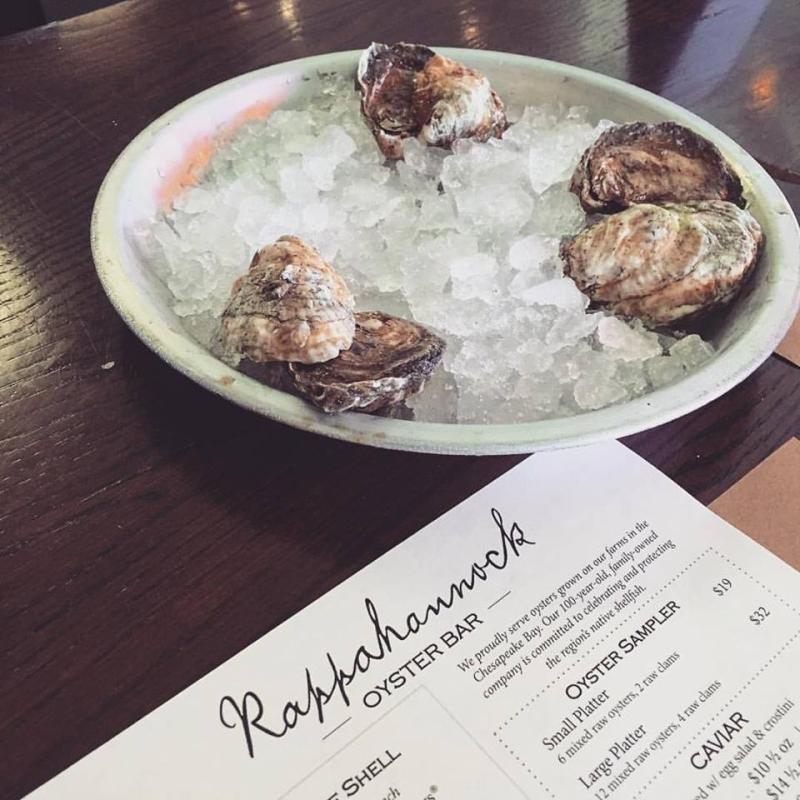Oyster bars offer guests a variety of different types of oysters as well as the experience of eating in a more hands-on way. Whether you are looking to impress a date or just avoid spilling cocktail sauce on your shirt, here is some advice for oyster bar beginners.
First, do not be intimated! Everyone from the oyster growers, restaurant owners, shellfish shuckers and chefs are happy that you want to try their product. Second, feel free to ask questions. However, a little bit of homework can go a long way for a newbie at an oyster bar so we asked some oyster experts for helpful tips.
Try Different Types of Oysters
There are of course different species of oyster, but the shellfish’s flavor comes primarily from the region where it grows. Words like buttery, savory, and even crisp are used to describe different oyster tastes. The two most common terms used are briny and sweet. The briny oysters are a product of filtering salty water and these oysters usually come from the ocean or areas with high salinity. The sweeter-flavored oysters are usually produced in bays and creeks. The mix of salt and fresh water in these areas gives these oysters a sweet finish when consumed.
“Each region has a unique flavor; order a few oysters from different places and find out what suits you,” said Madhouse Oyster owner Ted Cooney. “Sometimes people order a plate of the same oysters and then compare it to something they had several weeks or months ago; I find that ordering different oysters at the same times makes it much easier to compare and contrast the taste.”
Size Matters
According to Patrick Hudson from True Chesapeake Oyster Company, “most of the oysters you find at an oyster bar are around three inches in length; this is often referred to as marketable size.” However, different sizes of oysters can be ordered depending on the consumer's preferences. At True Chesapeake Oyster Company, the common marketable-size oyster is known as the "skinny dipper." Their larger oysters have earned them the name "chunky dunkers."
"We find that oyster preference varies from person to person, but it often varies by region, too. For example, our smaller oysters are more popular in New England,” added Hudson. If you’re a little nervous about eating oysters start small, you can always work your way up to something like the chunky dunker if you choose.
Sauces and Garnishes
You'll often hear seasoned oyster eaters say that they enjoy the first oysters on their plate without garnishes. This is a really great way to taste the full flavor of the oyster. The juice inside the oyster, known as "liquor" to shellfish aficionados, is an essential part of the oyster tasting process.
In fact, shuckers are trained to not only open your oyster but to ensure that the small pool of clear liquor remains in the bottom of the shell for your tasting pleasure. Once you have tasted the liquor and the oyster, you may decide to try some garnishes.
“Most oyster bars will provide you with items to accent your oysters; these garnishes include lemon, cocktail sauce, horseradish, and mignonette sauce,” said Rappahannock Oyster Bar manager Jean Paul Sabatier. Mignonette is a typical garnish for raw oysters made from red wine vinegar, minced shallots, and often cracked black pepper. It is not uncommon to add hot sauce to oysters and many shellfish establishments have these garnishes available for customers.
When You’re Done
Now that you have tried different types of oysters and different garnishes, you will have a plate full of ice and empty shells in front of you. Some folks like to flip their oyster shells upside down to signal that they are finished, while others leave them facing up. Either way, the oyster’s job is not done yet!
Many oyster bars and restaurants participate in shell recycling programs. The shells that you have just emptied out will be set aside to cure for upwards of 12 months. Then they'll be placed back into waterways to create the next generation of shellfish.
“Natural oyster shell is one of the best materials to raise new oysters and restore oyster reefs; the shells are a limited natural resource and a valuable tool for improving waterways and oyster populations,” said University of Maryland Sea Grant Agent Don Webster. "The adult shells are an essential part of providing habitat for new larval oysters to attach to and grow. It’s not like oysters can pack up and walk away if their habitat choice is ill-suited. Providing a stable place out of the mud is key to growing new wild oysters."
So there you have it—a rundown on oyster flavors, garnishes, and even a little background on oyster restoration and lifecycle to impress your friends. The only thing left is to put your new knowledge to the test!
Want even more oyster action? Watch as John Paul Sebatier and Johnny of Rappahannock Oyster Bar in Washington D.C. demonstrate the Chesapeake stab method of shucking.



